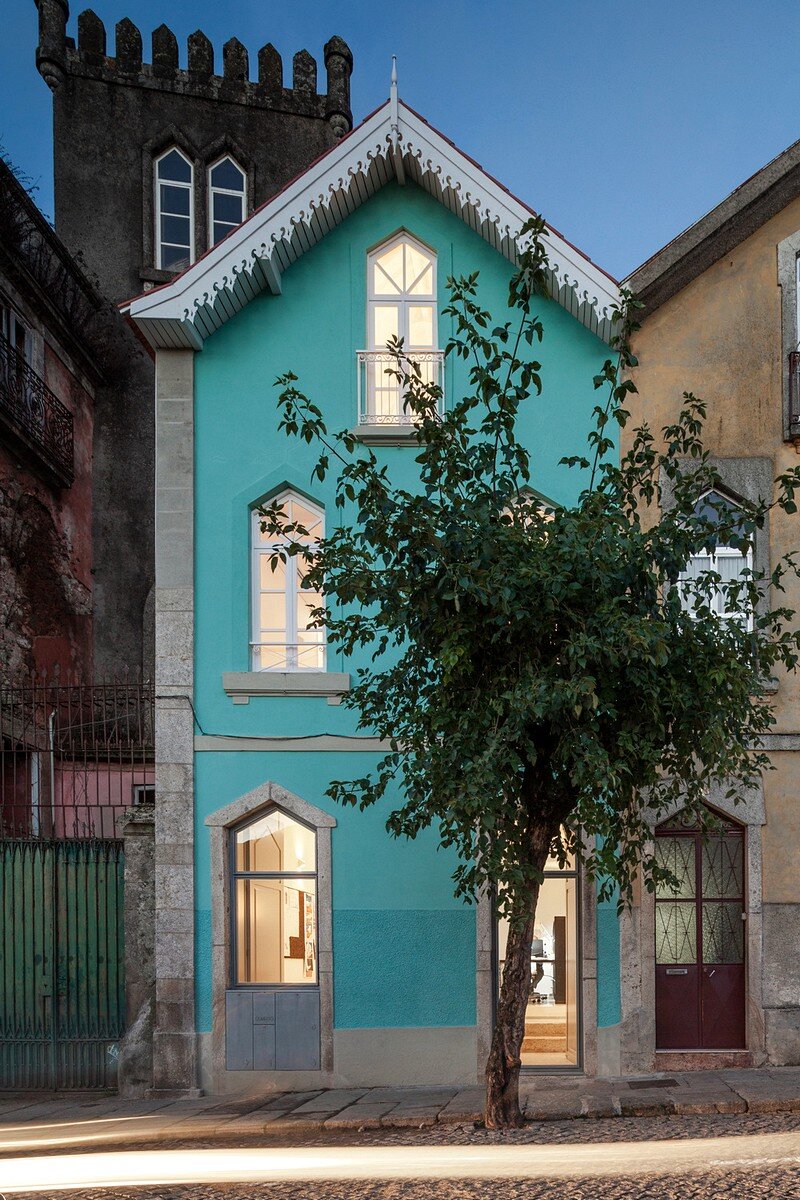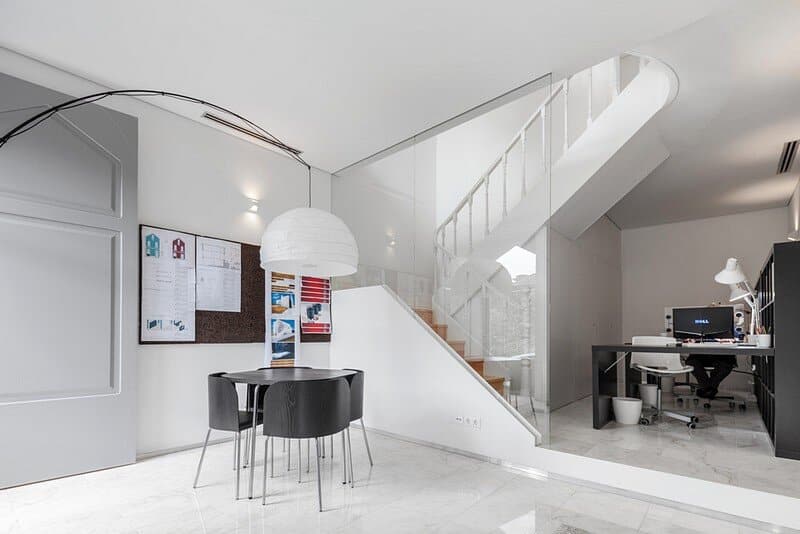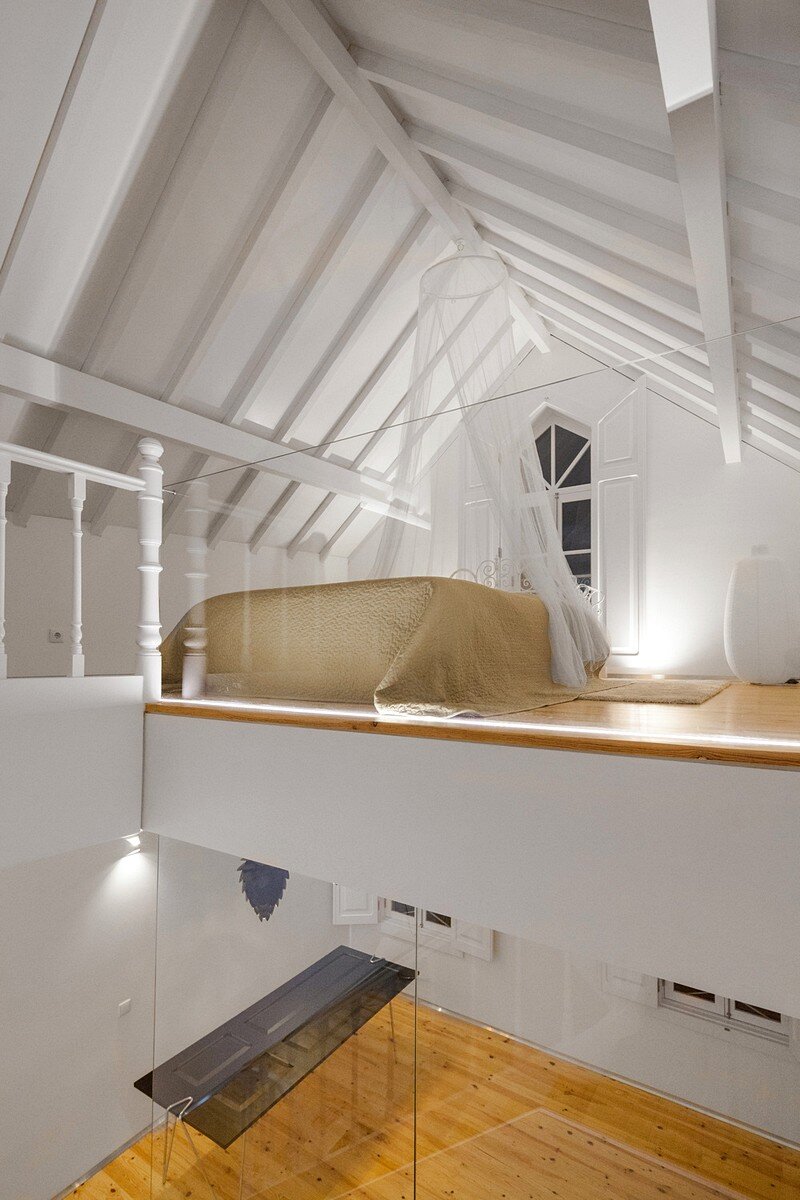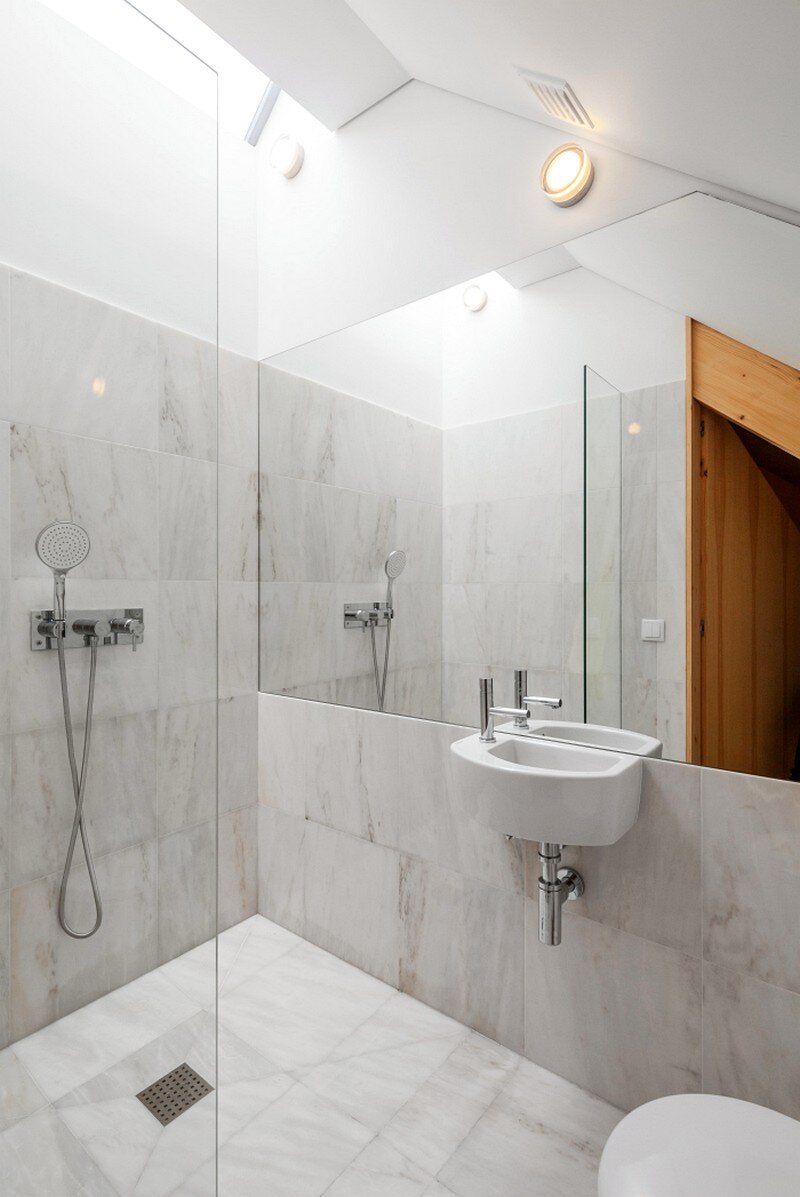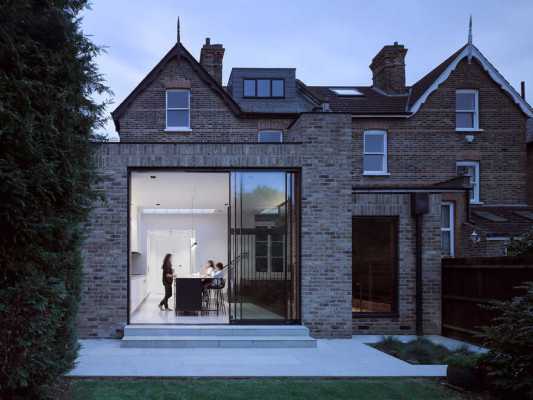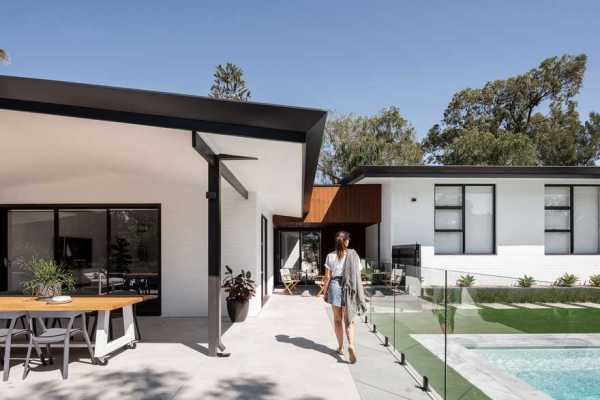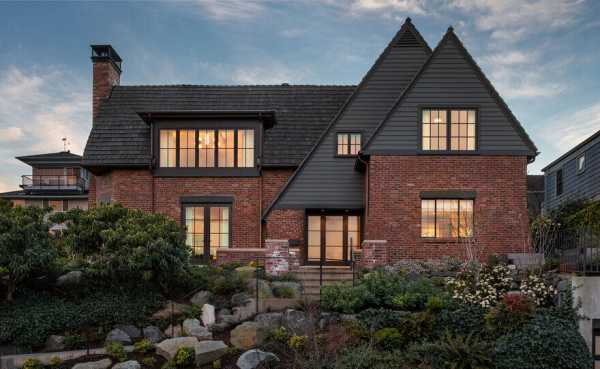Project: Three Cusps Chalet
Architects: Tiago do Vale Arquitectos
Location: Sé, Braga, Portugal
Builder: Constantino & Costa
Area: 165 m2
Photography: João Morgado
Recent winner in the American Architecture Prize, the Three Cusps Chalet is a very peculiar building, documenting this region’s history and diaspora, and combining typical 19th century Portuguese architecture and urban design with an unexpected alpine influence. This influence was brought by an historic wave of rich Portuguese returning from Brazil in the eighteen hundreds (significantly influenced by central-europeans building Brazil’s second industrial revolution).
Conceived as an annex serving the small palace by its side and siting at the heart of both the roman and medieval walls of Braga, this is a particularly sunny building with two fronts, one facing the street at West and another one facing a delightful, qualified block interior plaza at East, enjoying natural light all day long. The program of Three Cusps Chalet asked for the cohabitation of a work studio and a home program.
The building’s identity had been lost in 120 years of small unqualified interventions, over-compartmenting it, closing it to the street and to the light. Its façade was equally adulterated: modern aluminum window frames and exterior shade head boxes changed the openings’ stereotomy, the building’s scale and detail, and disrupted the original sense of the street.
The goal of this design was to clarify the building’s spaces and functions, returning it to its original image, constructive techniques and (mainly habitational) program, while simultaneously making it fit for today’s way of living, giving it back to the city and potentially constituting a model for future rehabilitation projects in the neighborhood.
The façade was restored to its original glory, reinstating the original wooden window frames and preserving the delightfully decorated eave. The interior recuperated the original spacial and functional distribution, wooden floors and ceiling structures and the original staircase, while introducing Portuguese Estremoz marble on the wet areas and ground-floor.
A 1,5 m height difference between the street and the block’s interior plaza allowed to place the working area on the ground level, turning it westward and relating it to the street. This façade is bathed with the afternoon light.
The domestic program relates with the interior plaza and the morning light. The interior plaza is punctuated by several orange trees: these provide a delicious shadow during the summer and display a beautiful show during winter, covered with bright fruits.
Given the reduced area of the building, the original strategy of hierarchizing spaces by floor was followed. The stairs are narrower with each flight of steps, informing the changing nature of the spaces it connects. The staircase geometry efficiently filters the visual relations between both programs while still allowing for natural light to seep down from the upper levels.
The first floor of Three Cusps Chalet was kept for the social program of the house. Refusing the natural tendency for compartmentalizing, the staircase was allowed to define the perimeters of the kitchen and living room, creating an open floor with natural light all day long. Light enters from the kitchen in the morning, from the staircase’s skylight and from the living room in the afternoon.
Climbing the last narrow flight of stairs we reach the sleeping quarters where the protagonist is the roof, whose structure was kept apparent, though painted white. On the other side of the staircase there’s a clothing room, backed by a bathroom.
The white color is methodically repeated on walls, ceilings, carpentry and marble. The clothing room is the surprise at the top of the building. Both the floor and roof structure appear in their natural colors, surrounded by closet doors constructed in the same material. It reads as a small wooden box, a counterpoint to the home’s white box and to the marble box of the bathroom.

